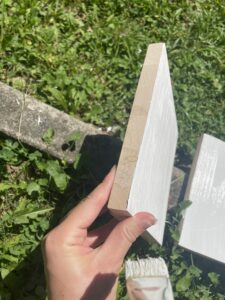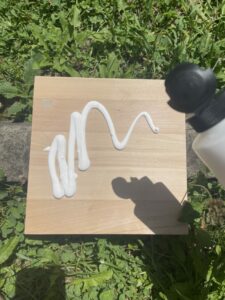What are the health dangers of gesso?
Be mindful of the health dangers of gesso when prepping your canvas.
Gesso is a versatile and commonly used material for preparing surfaces for painting. It’s a mixture of binder, typically glue or acrylic polymer, and a white pigment such as chalk, gypsum, or titanium white.
While gesso itself is generally considered safe to use, there are a few health concerns that artists should be aware of.
Common Health Issues When Using Gesso
Irritation and Sensitization
Gesso contains various chemicals that can potentially cause skin irritation or allergic reactions in sensitive individuals. Prolonged or repeated skin contact with gesso might lead to redness, itching, or rash. To mitigate this, artists should wear gloves when applying gesso and work in a well-ventilated area.
Inhalation of Dust
When sanding gessoed surfaces, the process can generate fine dust particles that, if inhaled, may irritate the respiratory system. Inhaling large amounts of this dust over a prolonged period could potentially lead to respiratory problems. To avoid this, it’s recommended to wear a dust mask while sanding gesso and to work in a space with good ventilation or air filtration.
Toxicity of Components
Some traditional gesso recipes might include toxic substances like lead carbonate. While lead-based gesso is less common today due to its known health risks, artists using older or traditional formulations should exercise caution. Modern acrylic gesso formulations are generally safer, as they do not contain lead or other highly toxic components.
Allergic Reactions to Acrylic Components
Acrylic-based gesso is the most common type used today. While acrylics are generally considered safe, some individuals might still be sensitive to certain components in acrylic formulations. This sensitivity can manifest as skin reactions or respiratory discomfort. Artists who have experienced allergies to acrylics in the past should test a small patch of skin before using acrylic gesso extensively.
Volatile Organic Compounds (VOCs)
Some gesso formulations, especially those containing acrylic binders, can release small amounts of volatile organic compounds into the air as they dry. While the levels are generally low, prolonged exposure to high VOC concentrations in poorly ventilated spaces can lead to headaches, dizziness, and other discomforts. Working in a well-ventilated area or using low-VOC or VOC-free gesso formulations can help mitigate this issue.
How to Stay Safe
When I gesso, I like to do it outside. I even leave the canvas outside to dry. I am just careful to put the canvas somewhere it is protected from the rain.
To minimize potential health risks when working with gesso, artists can take the following precautions:
- Work in a well-ventilated space: Good airflow helps dissipate dust and fumes, reducing exposure.
- Wear protective gear: Use gloves and, when applicable, a dust mask to prevent skin contact and inhalation of dust.
- Choose safer formulations: Opt for modern acrylic-based gesso formulations over traditional recipes with potentially toxic components.
- Be aware of sensitivities: If you have a history of allergies or sensitivities, test the product on a small area of skin before applying it extensively.
- Proper clean-up: Wash hands thoroughly after handling gesso and avoid touching your face during the process.
By being mindful of these potential health concerns and taking appropriate precautions, artists can continue to enjoy the benefits of gesso while minimizing any associated risks.
Finally, here are some related posts you might enjoy.

